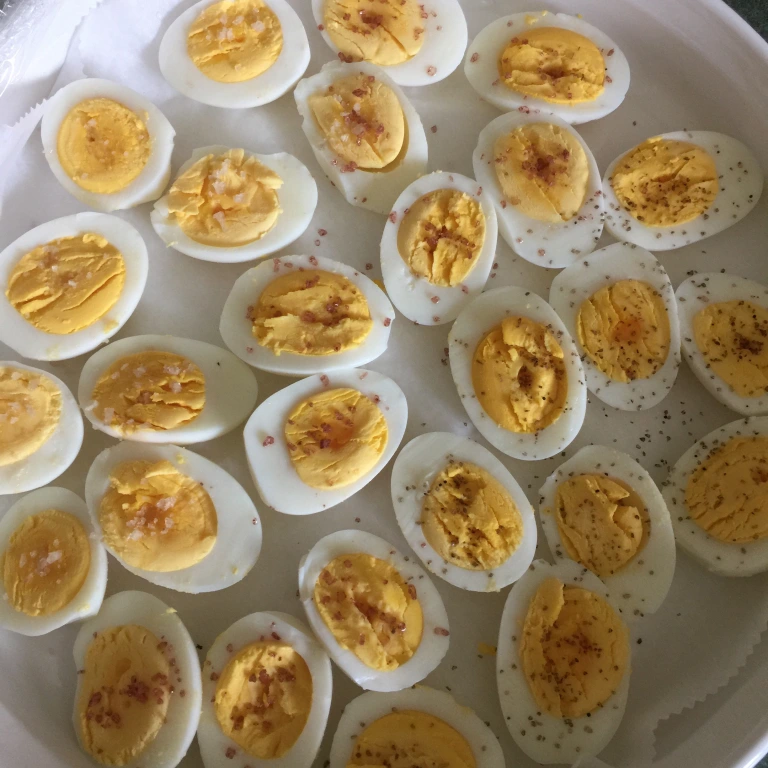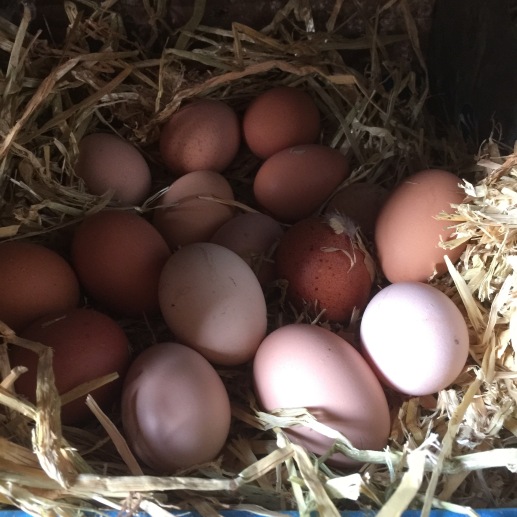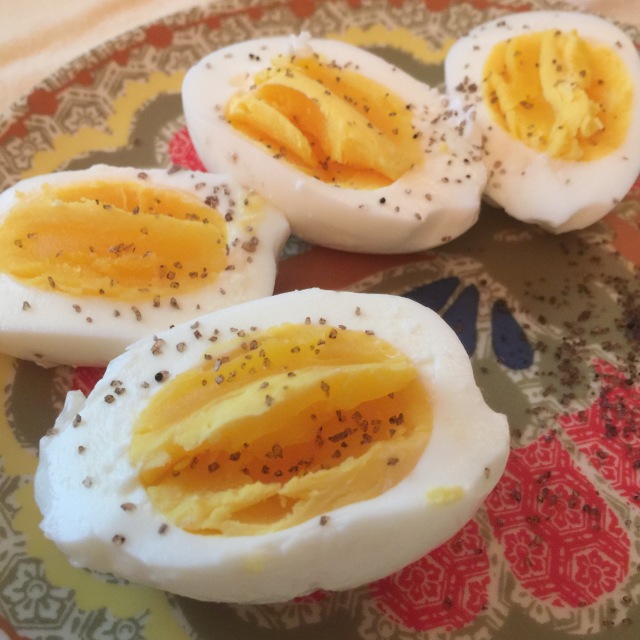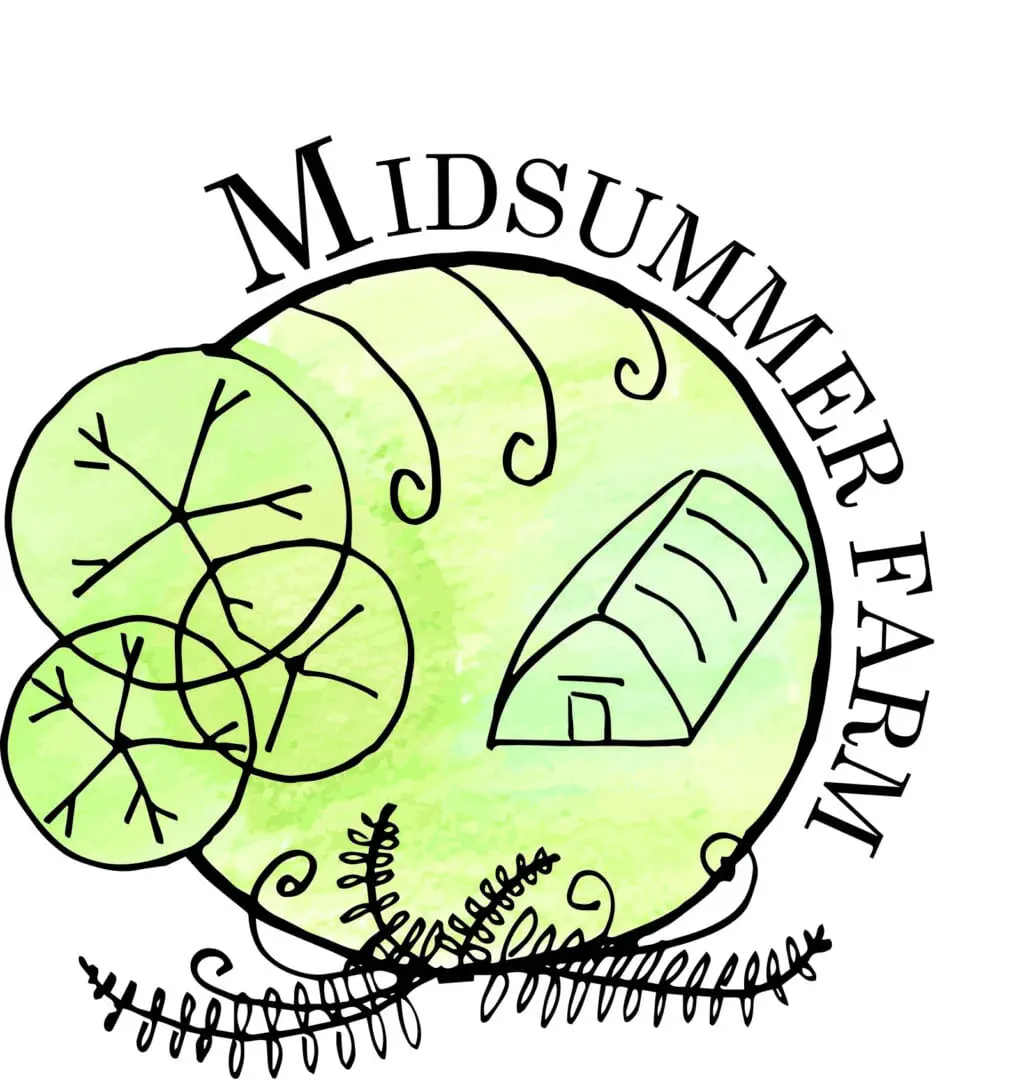
SUBLIME HARD-BOILED EGGS
I feel like I just became re-acquainted with simple hard-boiled eggs. And suddenly, I can’t get enough of them!
When you use well-produced high quality ingredients, simplicity seems called for – so that the egg itself (with all the levels of flavor accumulated by the diverse and natural upbringing of the hens) is the star. The art is in the raising of the poultry allowing it to shine in the dish…
________________________________________________________________________________________
Consider raising your own flock of laying hens and get your own fresh and naturally-diverse organic eggs! Our next Poultry Workshop here at Midsummer Farm will be on June 18th 2017. See more info and register here. We are also currently developing an on-Line version of our Poultry workshop – to come Summer 2017.
________________________________________________________________________________________
Hard boiling is often considered difficult to do with truly fresh eggs. When an egg is fresh (meaning laid a couple days ago, not bought in the grocery store), there is almost no air between the white and the shell. This lack of air space makes fresh eggs very hard to peel. You end up pulling a lot of white off with the shell, and the end results look messy. You can find a lot of very different – and sometimes insanely time-consuming – instructions for how to go about hard boiling a fresh egg and being able to gracefully peel it… They all work sometimes.

This is how I usually go about hard boiling… most of them will peel ok, but you’ll still get some messy ones. They will still taste great even if they look messy!
- For regular sized chicken eggs, refrigerate them first, so they are cold. Then place the eggs in a single layer on the bottom of a pot of water and fill with cold water. There should be about 2 inches of water over the tops of the eggs.
- Take the cold pot and heat on high until it boils. Allow them to boil for 2 minutes. Then take them off the heat and let rest 2 minutes.
- Then run them under cold water until they feel cool to the touch. I usually bounce them a bit here, letting the shells crack.
- Let rest again for about 5 minutes. They should feel slightly warm to the touch at this point. Peel them as usual, being as careful as possible. Some will peel perfectly, others, not so perfect…
- For bantam eggs – Allow to boil only 1 minute; let rest in hot water 1 minute more.
- For duck eggs or jumbo chicken eggs – Allow to boil 3 minutes; let rest in warm water another 3 minutes.
________________________________________________________________________________________
How to tell how “fresh” an egg is. Fresh eggs will lay on their sides when immersed in water. The more air that is in the egg, the more it will float. A not-so-fresh egg will sit up on ones of its top or bottom (pointed/narrow) sides. An older egg will start to bob or even float on the surface of the water…
________________________________________________________________________________________
After peeling, I simply cut the hard boiled eggs in half. My goal is to get the yolks dark, velvety, and vibrant with the whites being tender and sweet. I found that sprinkling a bit of colored sea salt or smoked sea salt just brings the flavors out and is perfectly sublime.


